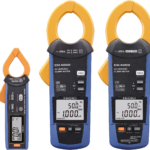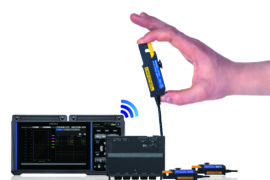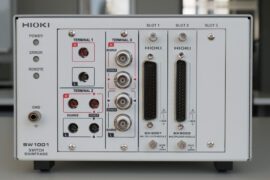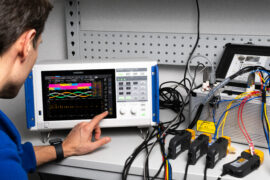The history of current sensors developed by HIOKI represents a journey of innovation and technical advancement in the field of electrical measurement. HIOKI, established in Japan in 1935, has been a pioneer in the electrical measurement industry, focusing on the development of professional and reliable testing and measuring instruments, including current sensors.
HIOKI’s foray into the measurement field began with the production of electrical meters and testers, setting the stage for future developments in current sensing technology. The company’s early commitment to quality and precision laid the groundwork for the advanced current sensors they would later develop.

The first current sensing device in the history of HIOKI was the CT-300 – an analog clamp meter introduced in 1971 which featured 5 current ranges, 3 voltage ranges and a resistance measurement function. This was followed in 1977 by the introduction of HIOKI’s 3202 – the world’s first clamp meter using LCD technology to display the measurement value.
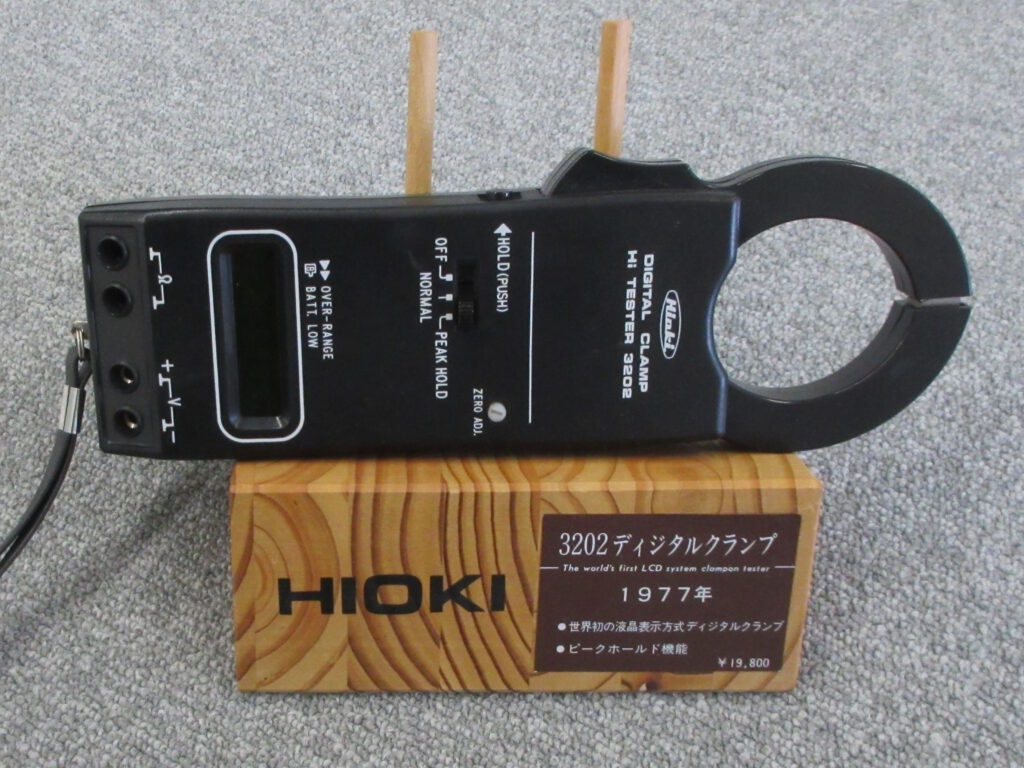
The 3202 was a clamp meter capable to measure currents of up to 1000A. The closest modern-day equivalent would probably be HIOKI’s CM4375-50 clamp meter which can also measure currents of up to 1000A. Just compare how the design of the jaws has been improved over the years, allowing today’s clamp meter to be used in much tighter spaces.

One thing which was certainly not on the cards in 1977 was the support of Bluetooth functionalities which allow for the clamp meter to communicate with a smart phone or tablet and to transmit live measurement data. Today, HIOKI’s Z3210 Bluetooth transceiver can be added to a an increasing range of measurement instruments, or it is already bundled with the instrument – for example as CM4375-90.
But of course clamp meters are not the only HIOKI current sensing devices. In 1978 HIOKI released six different types of power meters to be used with clamp-on current sensors. One of them was the portable 3131 clamp-on power tester.
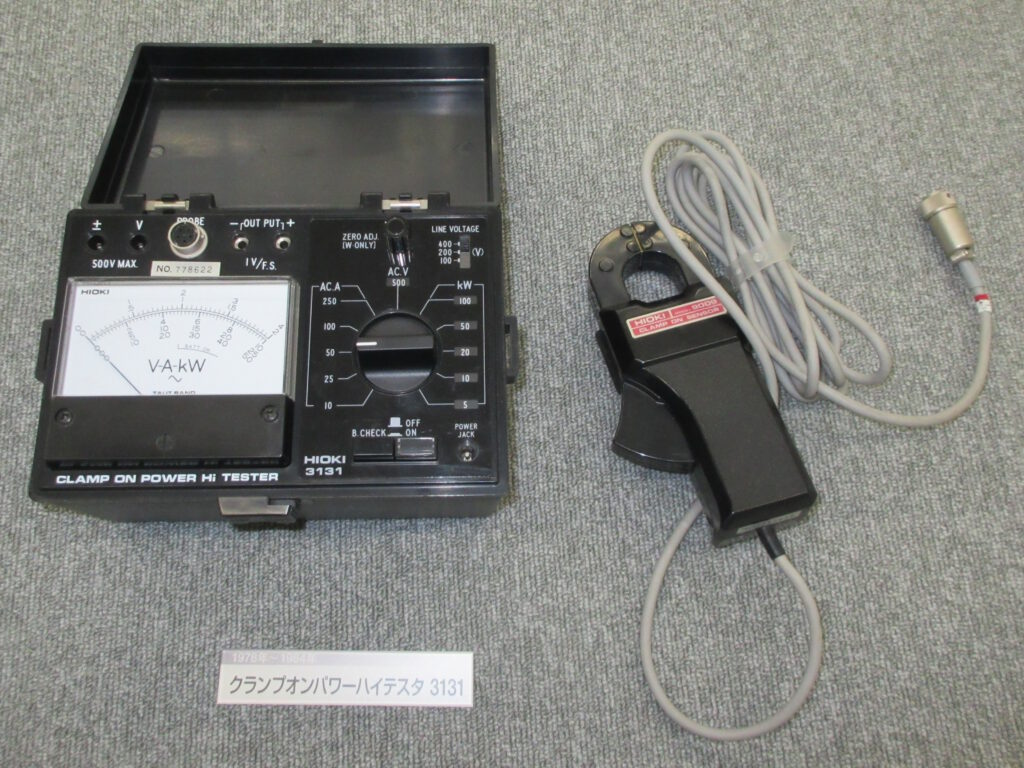
Today, the equivalent portable AC clamp power meter would be HIOKI’s CM3286-50. As you can see it has become a lot more compact, a lot more powerful as it also measures power consumption, it is battery powered and it also includes optional Bluetooth functionality.
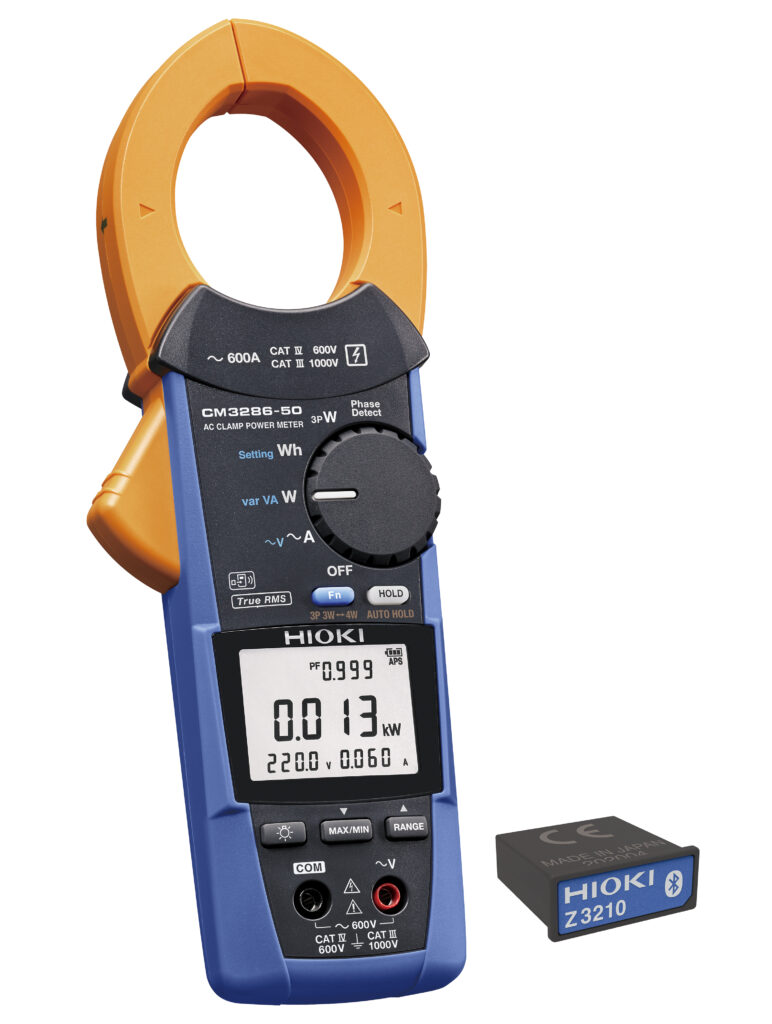
Launched at the same time of HIOKI’s portable 3131 was the 3133 clamp-on bench power tester.
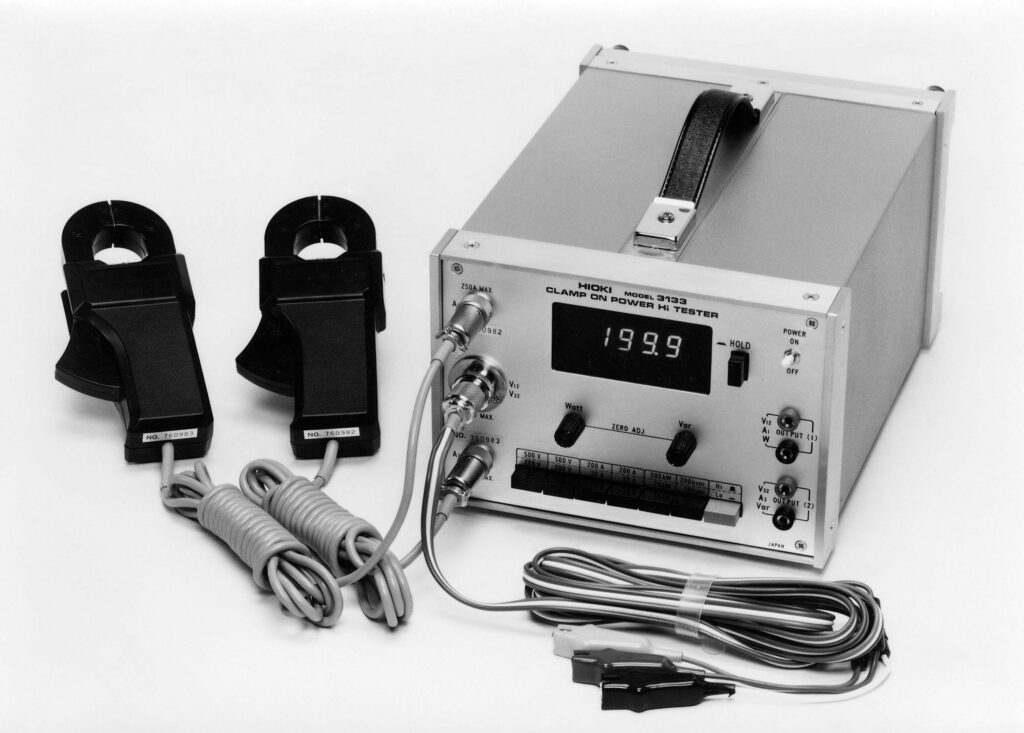
The 3133 power tester allowed to be connected to an optional power integrator called 3141, allowing to also measure power consumption. If the colors of the instruments remind you of the shirts worn by Sonny Crockett in Miami Vice in the mid 80s then HIOKI was way ahead of it’s time in 1978.
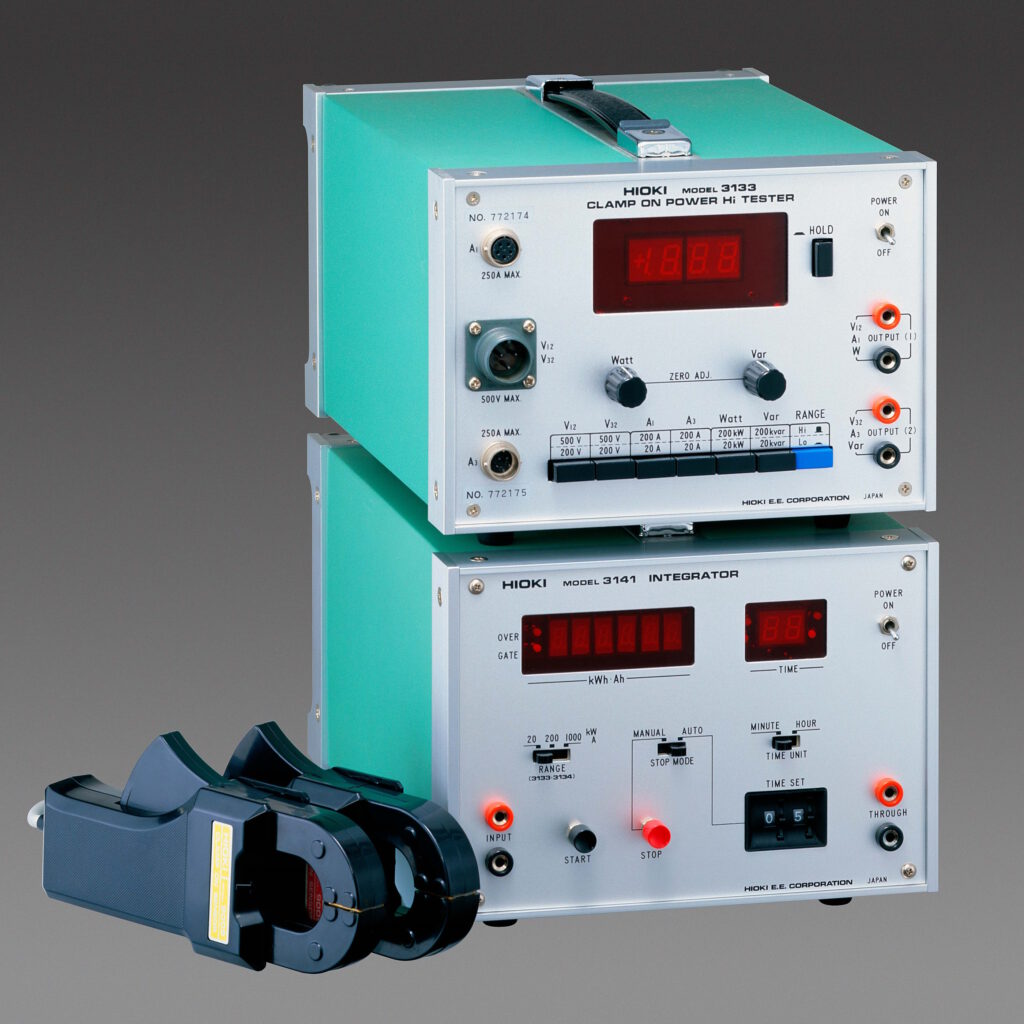
HIOKI’s clamp-on sensors of today are AC/DC zero-flux clamp-on sensors using fluxgate technology like the CT6844 for currents of up to 500A.
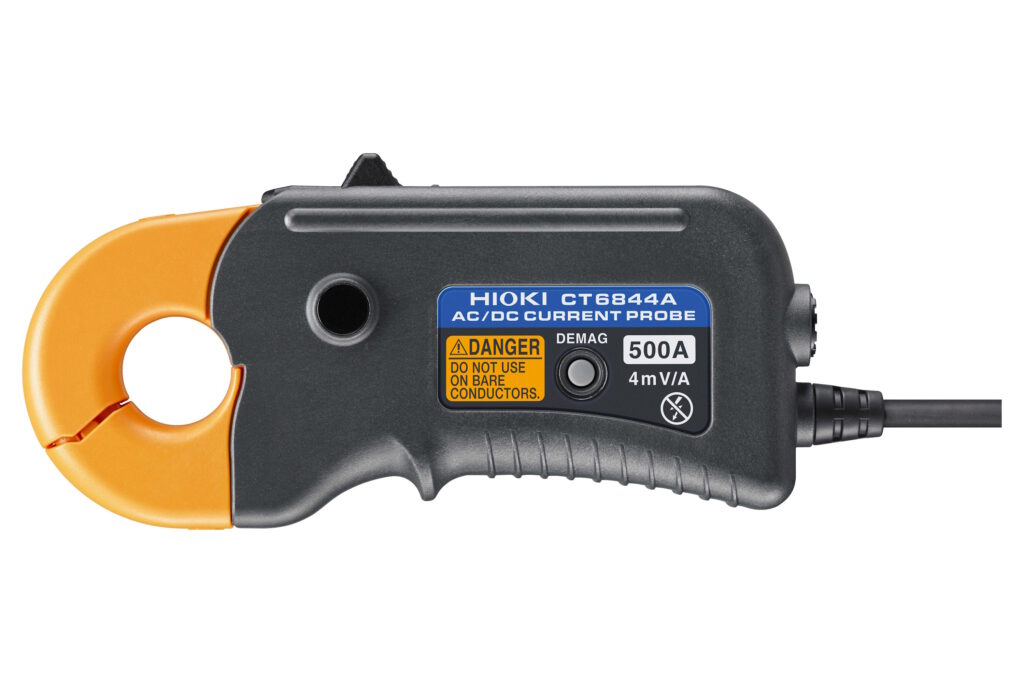
When used with a HIOKI power analyzer, these modern-day current sensors exchange additional information with the analyzer like output power ratio or the phase shift error of the sensor. But of course these sensors can also be used with any other power measurement or DAQ system. As with HIOKI’s push-through current sensors like the CT6873, which don’t offer the same convenience of a clamp-on sensor but an even higher accuracy, they can be used with a sensor unit like HIOKI’s CT9557 which provides a BNC output for the current measurement signal.

A sensor unit was also required with the 9273 AC current sensor that HIOKI introduced in 1993. It featured a bandwidth from 0.7Hz to 10MHz and a maximum input current of 20A.
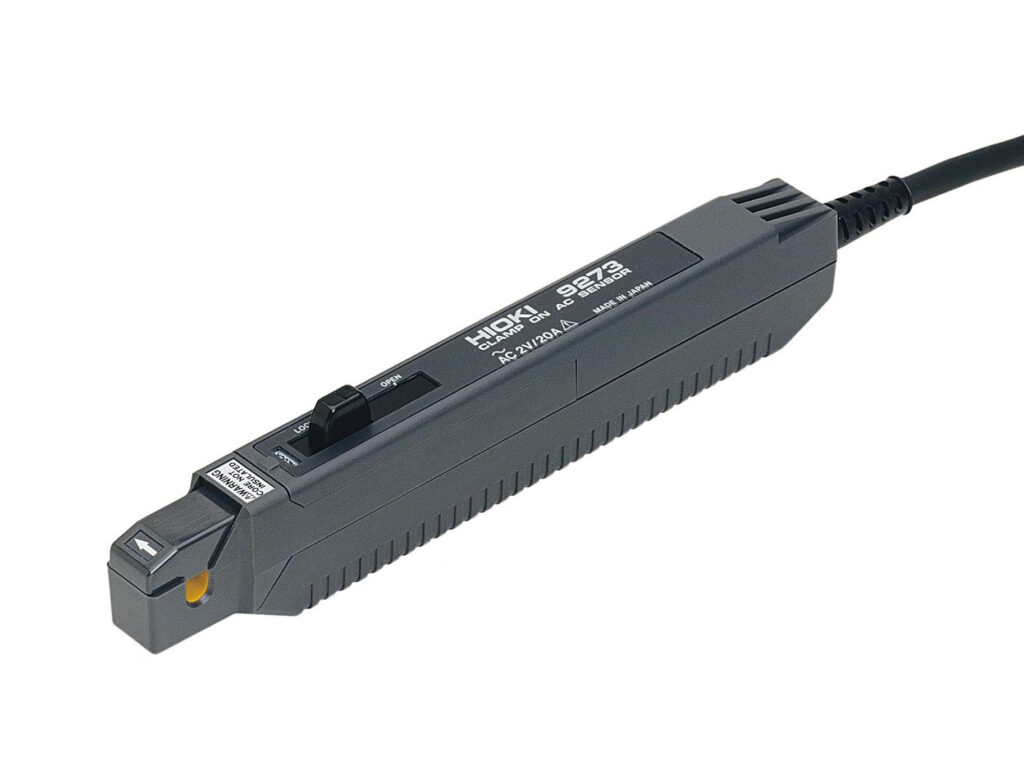
The 9273 sensor already featured HIOKI’s typical slide lock mechanism, and if you are familiar with today’s HIOKI wideband current sensors then you can probably very quickly spot some design similarities.
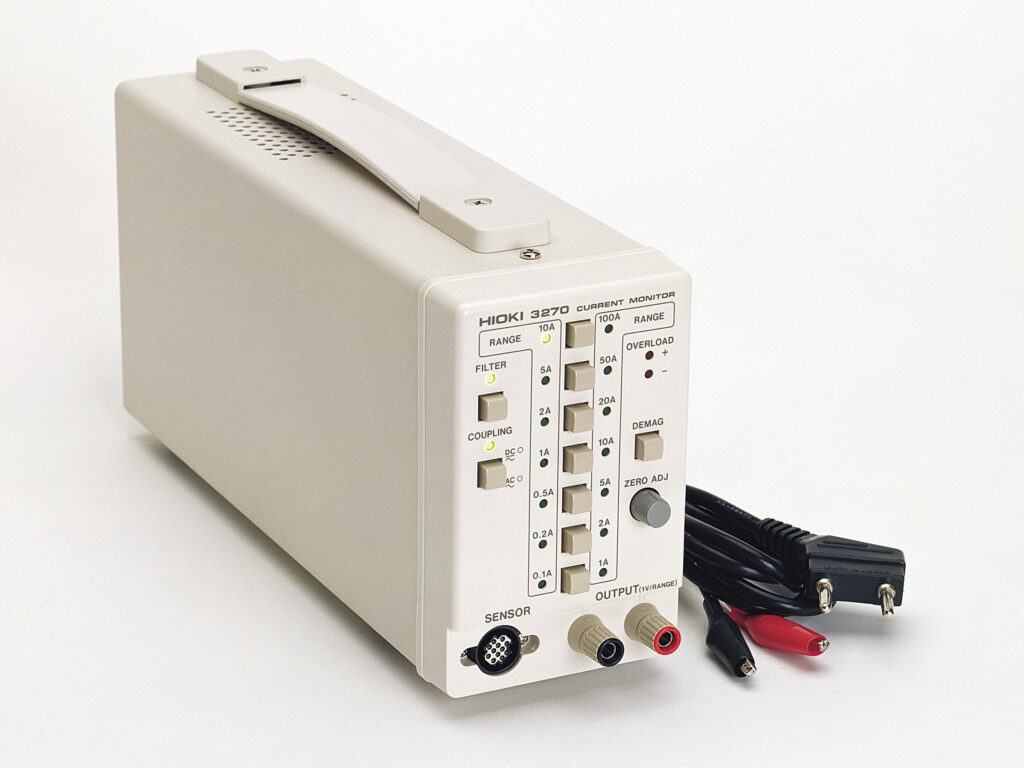
At this time in the early 90s the sensor unit – or “current monitor” as it was called back then – did not offer a BNC output which would allow to directly connect the sensor to an oscilloscope. That changed in 1998 with the launch of HIOKI’s 3273.
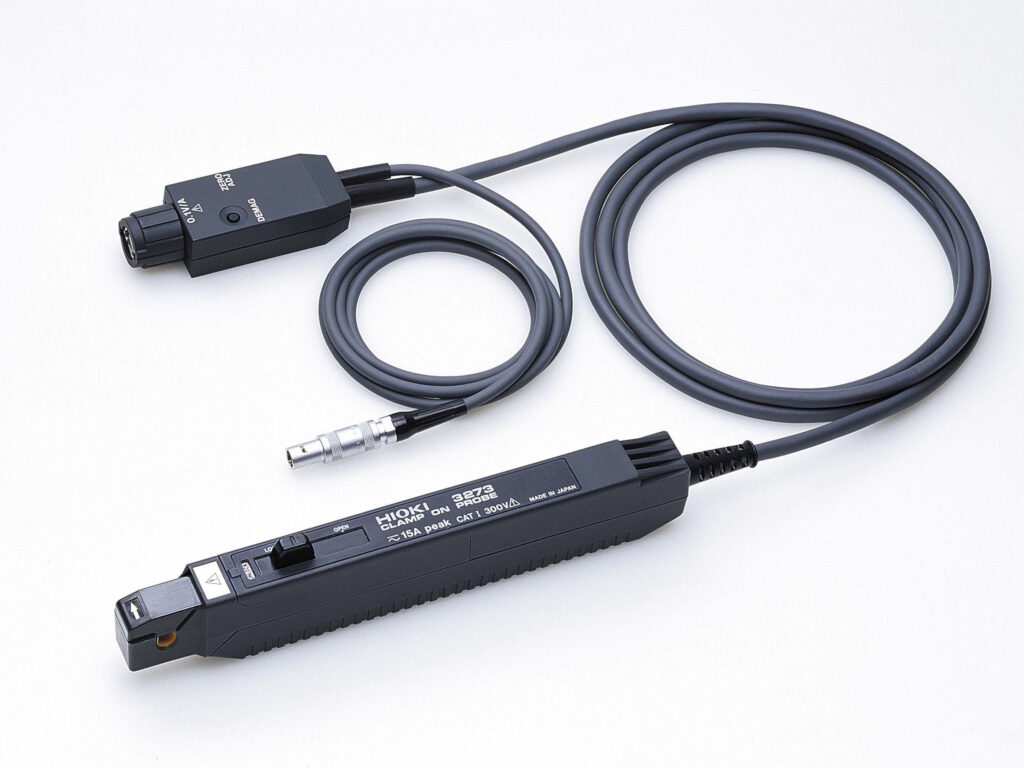
The 3273 current sensor was a wideband zero-flux current sensor using a hall element. The maximum input current was 15A (peak) and the bandwidth went from DC to 50MHz. The successor of this sensor is called 3273-50 and with it’s improved maximum input current of 30A it is still available today.
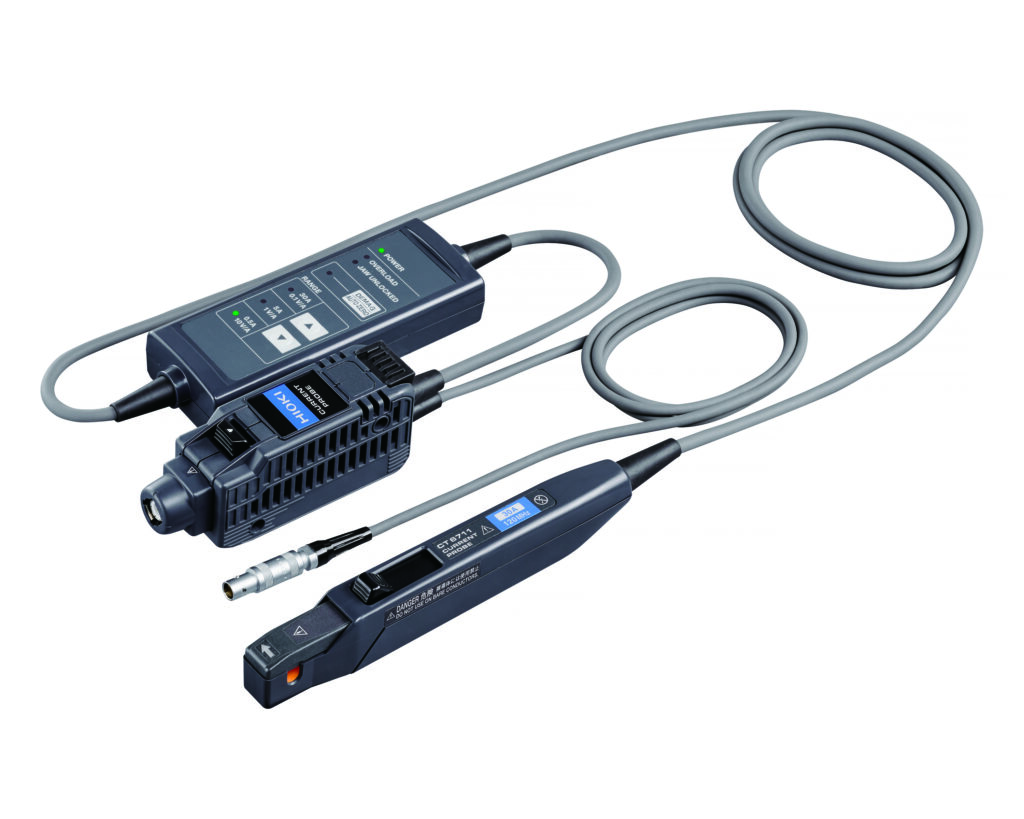
Of course, HIOKI didn’t stop there and over the years introduced a wide variety of wideband current sensors to be used with oscilloscopes of all brands or HIOKI’s own memory recorders – the latest one being the CT6711 with three current ranges from 0.5A to 30A and a bandwidth from DC to 120MHz.
Whether it’s clamp meters, high-precision fluxgate sensors or wideband current probes: As the electrical world continues to evolve, the story of current sensing will surely continue for HIOKI.



